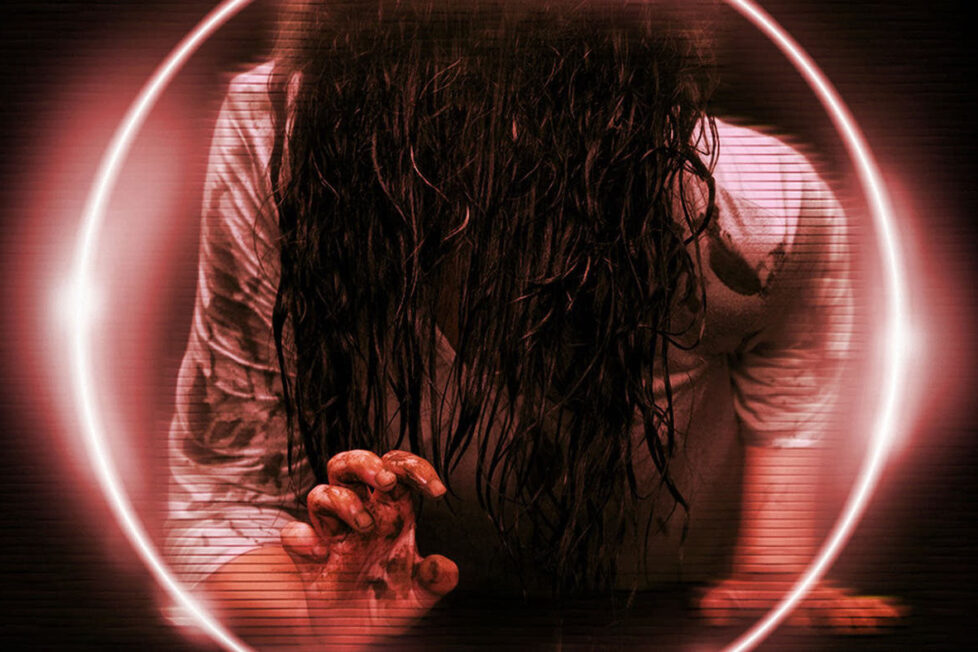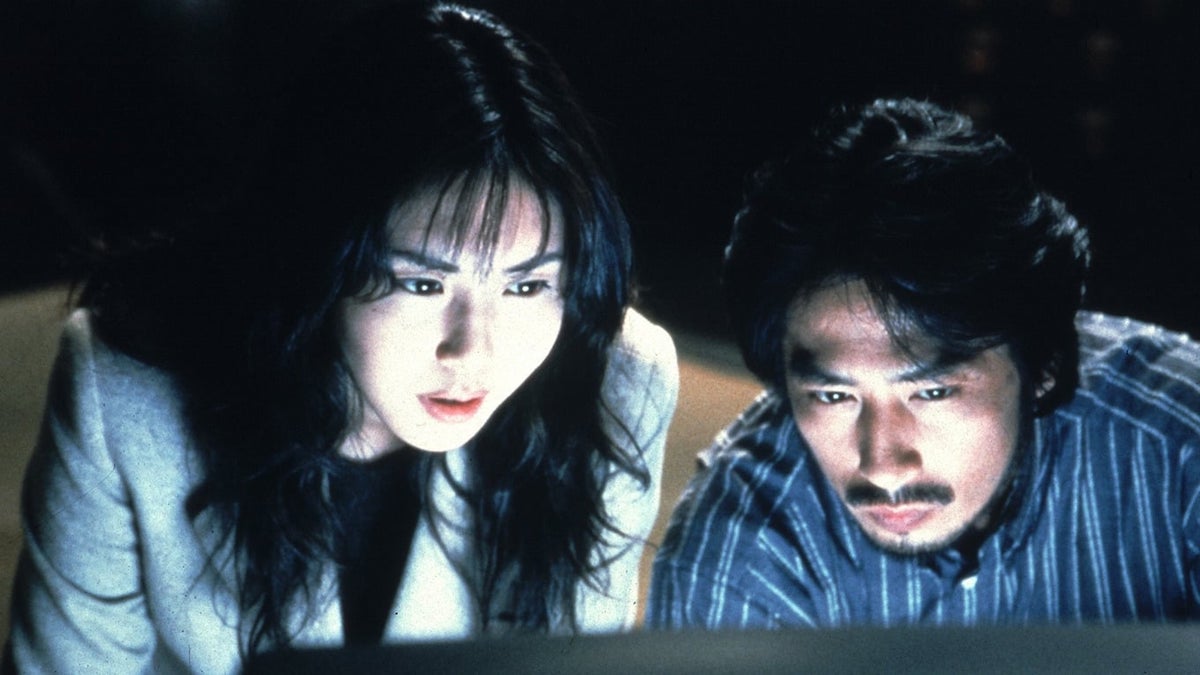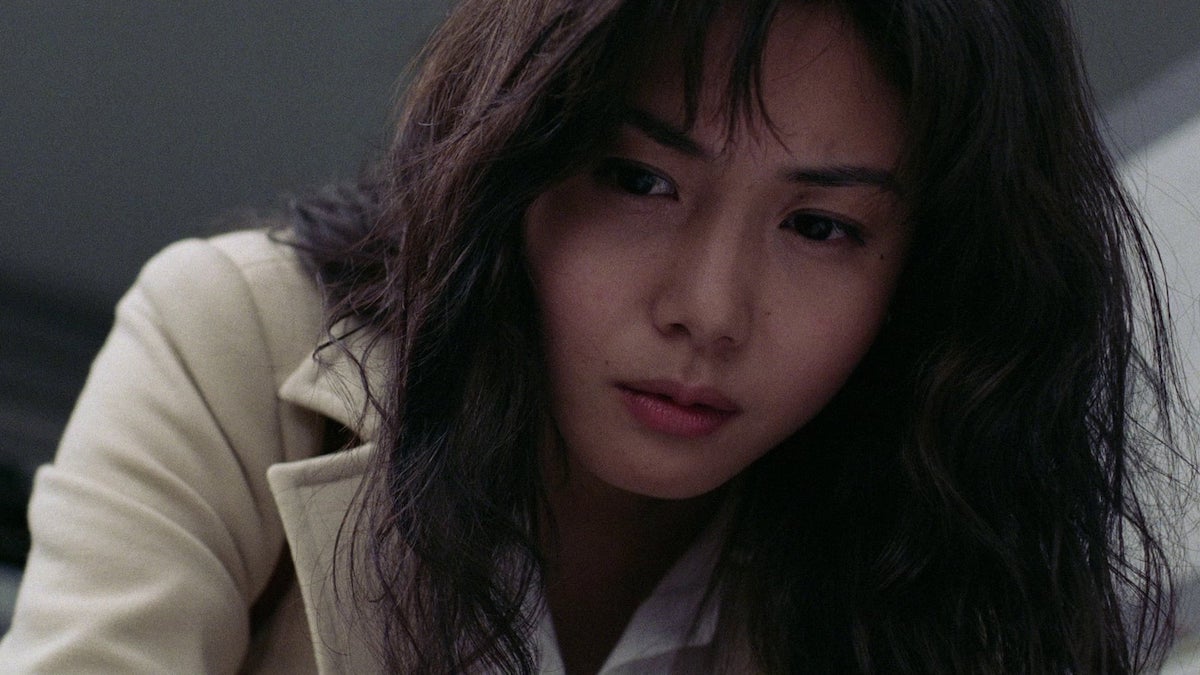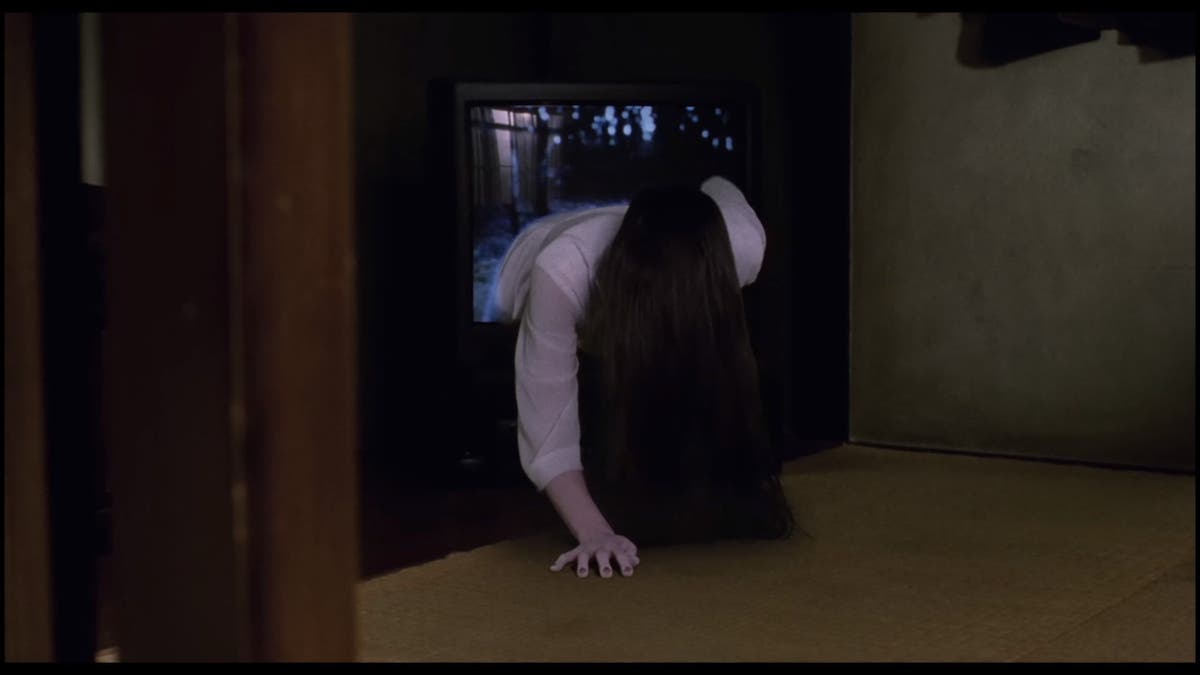RINGU (1998)
A reporter and her ex-husband investigate a cursed video tape alleged to kill the viewer seven days after watching it.

A reporter and her ex-husband investigate a cursed video tape alleged to kill the viewer seven days after watching it.


Ringu (リング) is a film with a reputation that precedes it. If you haven’t seen it, you’ve likely seen any number of the things it influenced: from its US remake in 2002 to spoofs in things like Scary Movie 3 (2003), or even The Simpsons‘ “Treehouse of Horror XXXII” episode. Or just through cultural osmosis, you perhaps recognise the image of a girl crawling out of a television set with a curtain of sodden black hair covering her face. Like so many of the best images in horror cinema, it feels as if it now exists in the public consciousness. It’s transcended from being just a scene in a film to instead becomes an indelible image, separate from its origin; a nightmare that’s somehow always existed in the collective mind.
The memetic nature of Ringu‘s iconography is fitting, as this is a film about symbolic cultural viruses, and death being spread from person to person. Likewise, horror in the 1990s was like a game of telephone; you’d hear about a friend of a friend who’d seen a film and swear it was the most twisted thing you’d ever see… perhaps even real. The legend of curses in films like Candyman (1992) would gain a tangibility with Ringu, a film about a video that in itself felt truly cursed. Along with The Blair Witch Project (1999), the new vanguard of horror suggested you were no longer safe on your side of the screen.
The concept of Ringu is brilliantly simple and introduced to us—where else?—during a sleepover. Teenagers Tomoko (Yūko Takeuchi) and Masami (Hitomi Satō) are hanging out in front of the TV. There are no parents around, just the youthful thrill of being up late and unsupervised. Masami tells her friend a story she’s heard: about a boy with comes to own a mysterious videotape, showing a woman on the screen proclaiming he will die in seven days. After he turned the video off, his phone rang. “You saw it”, a voice said. Masami relates this tale with a delighted grin on her face: “A week later, the kid died.”

Tomoko has a revelation for her friend. She’s seen the video and received the same phone call when it had finished playing. Director Hideo Nakata plays wantonly with the audience’s feelings, with revelations followed by fake-outs, giving the sense of a shifting ground upon which we’re unable to find our footing. Tomoko says it was a joke and the tension is eased… until the phone rings. Nakata plays masterfully upon not just the audience’s fears, but the kind of deep-seated superstitions we hold, despite rationality telling us otherwise. Do we ever really grow out of our superstitions, or will there always be a part of us that clings to them in a vain attempt to understand the world?
Trying to understand this mysterious threat is Reiko (Nanako Matsushima), a journalist and Tomoko’s aunt, who’s incentivised to uncover the truth after Tomoko is found dead following her sleepover with Masami. Also dead are three of Tomoko’s friends, with whom she watched the video. They died on the same day, at the same time. “Their hearts just stopped” it’s said. Nakata provides simple and effective scares, the most jarring being the ‘found footage’ of the crime scenes, in which the horror-stricken faces of the dead are revealed. There’s no gore, but the violence of their deaths is powerfully felt in their expressions. This is a purer terror, almost as if fear itself is what killed them.
Nakata also plays effectively with typically benign objects, transmuting them into something sinister. The telephone ringing and the television turning on become sources of domestic horror, and once Reiko starts digging into her investigation, photographs also become terrifying objects. Reiko finds Polaroid photos of the teenagers, taken soon before they died… and in each of them, their faces are monstrously distorted. The idea your fate might be hinted at through something as simple as a photo is startling. Nakata makes the ordinary frightening—even when a TV is turned off, the dark glass of the screen might reflect some eldritch horror.
In a brilliant weaponising of the audience’s curiosity, it’s also suggested the threat of watching the video comes not from being forced to watch it, but rather from a very human inability to resist watching it. It evokes the feeling of being young and staying up late to see if you can catch a glimpse of a late-night horror film, knowing you shouldn’t but utterly unable to stop yourself. Why do we watch horror films, or even caught-on-camera accidents, in the first place? We know and even hope they’ll make us feel uneasy. A warning not to watch them only makes it more appealing. Nakata understands this human desire to expose ourselves to upsetting material. But here he suggests that once we’ve seen something forbidden, there is no going back.

The investigative nature of the film’s first half is a refreshing spin on modern horror, focusing less on cheap scares and a cast of expendable teens, and more on the slow-burn uncovering of deeply buried secrets. Nakata shows us Reiko in offices full of mountainous files, newspapers, and computers cluttering the frame, suggesting a person for whom mess is part of a process. Every lead must be followed, and every source checked. This means that when she takes possession of the cursed video, it must be watched. The supposed seven-day countdown to her death begins, but it’s only when she discovers her young son watching the tape that she feels true panic. Whether she believes the curse or not, his countdown has also begun, and he’s been exposed to something he shouldn’t have been.
This makes for a neat metaphor for a parent’s purest anxieties, particularly in the modern world. How can you shield your children from something they shouldn’t see, and couldn’t possibly comprehend? And how much damage will it actually do once they’ve seen it? Even if the tape wasn’t cursed, it isn’t exactly the kind of bedtime viewing you’d want for a child. The images are simple but harrowing: a woman brushing her hair in the mirror, but it’s an impossible image because there should be a camera in view… a man standing with his head covered and pointing to something off-screen… words oscillate on a page, and finally a well is pictured. The low fidelity also gives the video a haunting texture, as the closer Nakata’s camera gets the more abstract the image becomes. The visual noise threatens to overwhelm it all, and like the churning and dark seas Nakata shows us over the opening credits, it feels like we might be consumed by it.
Visually it recalls the arthouse horror Begotten (1989), its abstracted visuals providing the freedom of interpretation for the audience. This makes it particularly disappointing when Ringu starts to forego its heady atmosphere for too-neat explanations. Especially frustrating is the character of Ryuji (Hiroyuki Sanada), Reiko’s ex-husband, who just so happens to be psychic. Ryuji watches the tape, and the two soon set out to undo the curse of the video. Reiko’s investigative nature is carelessly pushed aside in favour of Ryuji, his ability to sense spirits and see into the past just a little too neat and easy for a film as mysterious as this.

Reiko’s role is diminished as the film begins to explain each of its mysteries, and each answer is more disappointing than the last. Even more of a letdown is how these answers are given. Ryuji simply touches the arm of a man and this causes a long and awkward flashback scene which lays out the key players in the creation of the curse. It’s a rote payoff to such a pure and perfect horror concept. The forays into psychic abilities and long-buried secrets take us away from the fascinating core of the film—while Ringu might’ve extrapolated on how we use technology to express our fears, it instead delves too far into lore and the fantastical.
Thankfully, the film gets back on track for its final stretch. Nakata provides another excellent red herring when the real ‘lifting of the curse’ turns out to be much closer to the technology-as-a-virus theme of the film’s early scenes. This influence of this clever turn can be felt heavily in films like It Follows (2014) and the derivative Truth or Dare (2018), but Ringu did it best.
By revealing the pass-the-parcel nature of the curse, Ringu feels truly inescapable and terrifying; a curse that cannot be lifted, only passed around. This wisely foreshadows the age of social media, in which the miserable act of scrolling is just a way of prolonging the inevitable. Nakata saves his best scare for last, a perfect melding of digital and practical effects in which a TV screen becomes a window to death. It’s a perfect sequence, one that highlights specifically modern anxieties about the things we watch, and literalises our fraught relation to technology most sublimely.
Ringu is lightning in a bottle, arriving at just the right time with just the right images to deeply impact a generation of cinemagoers. It’s a flawed film and other works, such as Kiyoshi Kurosawa’s Pulse (2001), are more consistent in exploring the insidious ways in which technology can come to possess us, but Ringu is nonetheless an important work and that still has an unusually quiet power that, when unleashed, is singularly terrifying.
JAPAN | 1998 | 95 MINUTES | 1.85:1 | COLOUR | JAPANESE

This new 4K Ultra HD Blu-ray restoration from Arrow Video is astonishing. It’s the best the film has ever looked with its deep colour palette taking centre stage. The scenes of the churning seas look particularly sharp, and the level of detail in the wide shots is incredible.
The film’s score remains one of its most unsettling qualities and is presented here with both a lossless DTS-HD Master Audio 5.1 and PCM 2.0 soundtracks. It’s an excellent and dynamic mix, with every carefully selected sound choice coming through clearly.

director: Hideo Nakata.
writer: Hiroshi Takahashi (based on the novel ‘Ring’ by Koji Suzuki).
starring: Nanako Matsushima, Hiroyuki Sanada, Rikiya Otaka, Miki Nakatani, Yuko Takeuchi, Hitomi Sato & Yutaka Matsushige.
